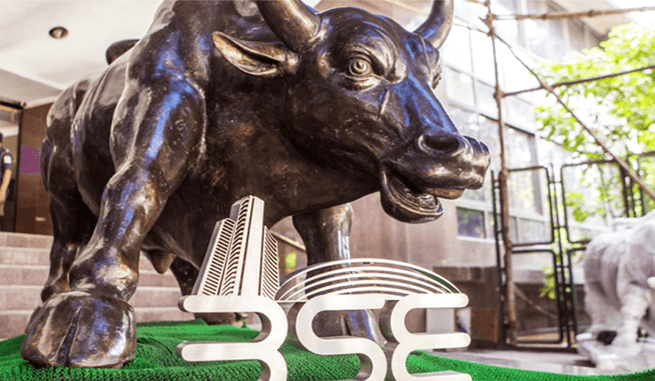F&O Trading: A Cash Cow Or A Time Bomb?
Dec 21, 2017 | 18:13 PM IST
Dec 21, 2017 | 18:13 PM IST

Is the stock investment risky? The answer is yes, but there are means to minimise risk and maximise profit. The biggest attraction of stock market is that it gives better returns than any other investment instrument, however, at the expense of higher risk. Those who enter the market are well aware that if they don't play their cards right they stand to lose a lot of money. In the same line, if you think equity investment is risky, then future and options trading is 10 times riskier than equity. Future & options (F&O) is a contract-bound trading type where the trade is carried out on the underlying asset, which is either a stock or an index (Nifty).
Warren Buffett calls F&O trading the financial instruments of mass destruction. Buffett summons harshest words for this instruments simply because F&O has the potential to cause massive financial losses to the traders. And over the years, more traders have lost money than earned money from F&O.
However, as it is one of the most popular tradings instruments, it is a subject worth exploring. Let's try to understand what one stands to gain and LOSE from the Futures & Options trading.
Futures & Options Are Two Different Types Of Trading Instruments
Future Contract
A future contract simply means two parties agree to enter a contract to buy or sell something at a predetermined price at a future date. The future contract is on the underlying asset. It derives its value from the underlying assets hence it is also called derivatives. For example, if you have developed an opinion that Tata Steel stock will rally in the next few week due to some contract they have got which will quite profitable to the company. As you are bullish about Tata Steel, you buy a future contract of Tata Steel (long position). Now if your directional view holds true, you will gain from the stocks price movement. In case it goes against you, you will lose money. Also, the contract has a certain time frame. In Indian stock market, the duration of a future contract is one month, it expires on the last Thursday of the month.
Short Selling Of The Future Contract
When you are buying a future contract, you are basically expecting the market to go up. The contract where you are expecting the market (the price of the underlying asset) to go up, this type of future trading is called going long. However, there is also the other dimension to the future contract which is called short selling. Contrary to going long, if you think the value of the underlying asset will fall in the future, you can sell the future contract and take a short position. Now you would be wondering - how can you sell something that you dont own? Well, in futures, you can do it. Just like in the long position you have to sell the contract to square off your position, in short selling, you have to buy the same contract to square off the position.
Option Contract
In options, you have two types - Call and Put. In the call option, the trader is expecting the price of the underlying asset to go up while in the put option the trader expects it to go down. An option contract is basically price probabilities of any future event. Let's take a general example of how it works. Suppose you buy call option of ABC company at the strike price of Rs. 250 with the expiry of 3 months. Now as the price of the stock moves towards the strike price you start to gain profit. However, the timeframe is a crucial factor here. If you buy a 1-month contract it will be cheaper as the chances of ABC reaching 250 are greater in 3 months than in 1 month.
What Makes F&O So Risky?
As mentioned above, the stock marketis extremely risky, to begin with. This quantum of risk gets multiplied in the F&O trading. Amongst various reasons that make it very risky, one is that it is a contractual trading. All the F&O scrips have a certain time-frame. For example, if you enter a contract on 1st June for the June scrip, your contract will expire on the last Thursday of the June. Unlike equity, where you can hold the position till the desired target is reached, in F&O you have the obligation to square off your position on the stipulated time.
How To Make Profitable F&O Strategy
First and foremost, there are no shortcuts to make money in derivative trading. But if you are committed to learning and understanding how it works, there are plenty of money-making opportunities. Essentially there 2 ways of trading in F&O - intraday or positional trading. If you are a beginner, trading intraday can be extremely dangerous as to gain in intraday you have to have the understanding of price movement on a daily basis. It's a complex study of low and high beta stocks. However, if you have a directional view of a certain stock or index (Nifty) then you can buy a future or an option according to your view and can hold it for the contract period (All F&O contracts can be exited at any given point in the contract period)
It's not the holding a future contract overnight makes its less risky, risk factor remains intact, but it allows you to live through the price fluctuation that every stock goes through. For example, if you have bought a future of Tata Motors with a view that it will go up. In a day's trade the stock doesn't move in your direction, instead, it moves against you. Now if you are trading on margin (Intraday) then you have to book the loss by the end of the day. The price might bounce back and reach the higher level on the next day. Thus if you be patient and wait for the reversal, there are chances that you can make money.
F&O Trading - An Addiction
As the futures and options trading offers big returns in a short time, it is only natural that it is looked at as a money-making machine. The real use of derivatives is hedging, we will discuss it in detail in the following section, but barring few, mostly it is used to milk quick gains. In a way, it is like gambling. And just like gambling, F&O trading is extremely addictive. When you see the grand money-making opportunities it is bound to make your eyes ogle and you are bound to make mistakes.
It usually goes like this - you start trading and make some early profits. Now you are excited and you make another trade and make more profit. By this stage, you are convinced that all those people whining about F&O losses are stupid and it is an easy way to make tons of money. In the haze of excitement, you make another trade, only this time with more lots, unaware of the fact that you are in for a rude shock. Your trade starts going against you and you don't exit the position thinking that it will be profitable again. It goes down and wipes out all the profit you made in the previous trades and also incurs huge loss.
Aftermath Of Losses
After being bruised black and blue by the ferocity of future's market, traders usually resort to two things - either they quit F&O trading for good or they swear revenge and get more capital and come back to trade with the single-minded resolve to recover all losses. Some call it revenge trading some call it a gambler's fallacy. Whatever it may be called, it's a bad idea.
Trading is to be done with systematic research and analysis. When you are down with big losses, you are not in the right frame of mind to think straight. In such situations, it is better to not trade at all. However, a study suggests that most of the traders lose more money in their attempts to recover losses. In this way, they end up digging a deeper financial hole for themselves.
Futures & Options For Hedging
Hedging can be used as an insurance for your stock holdings. Future and options are the best hedging tools as it provides a safety net for your equity holdings. Let's understand this phenomenon with an example. Suppose you have bought 500 shares of Infosys at Rs.900 apiece. After 3 months the stock is trading at Rs.1000. By now you have made a decent profit of 10%. But now the market condition has changed and there is a good possibility that Infosys shares will start crumbling down. In this case, you have 3 options - 1. Don't do anything 2. Sell at the current level and exit in profit or 3. Hedge your position.
If you decide to hedge the position, here's what will happen. At Rs.1000 you buy a short position of Infosys future. The lot size of Infy future is 500 (every stock's lot size is different). After buying a future you are evenly placed - if the stock goes down as you had predicted, you will gain in the futures contract and if it goes up you will gain in your holdings. This is how you can gain from the futures contract. However, the point to note here is the lot sizes of all the futures contract are different e.g. Infosys's lot size is 500 but Tata Motor's lot size is 1,500. Thus, your hedging can only be successful if you are holding the same number of shares as much as there are in future's contract lot.
SEBI Wants To Keep Retail Investors Out Of F&O
As we discussed above derivative trading is extremely risky. However, due to its high return potential, it attracts many retail investors. But do they make money? The answer, unfortunately, is - no. Most of the retail investors who dabble in F&O trading tend to lose a lot of money. Hence, to dissuade retail investors from trading in Futures and options SEBI has made few changes in F&O guidelines. It has increased the lot size from Rs.2 Lakh to Rs.5 Lakh. A bigger lot size simply means that the traders have to deposit a larger amount with the brokers. The HNI investors may not feel the heat of the higher lot size but it will definitely prevent small retail investors from participating in the F&O trading.
But Is This The Right Approach?
There are many people who trip on stairs every day. Some falls end up breaking bones, there might be some falls which have turned lethal. To prevent this from happening shall we make stairs highers so people wouldn't climb and thus wouldn't fall? That sounds quite ridiculous, doesn't it? SEBI's approach to discourage retail investors from trading in future's market to some extent is in the same line. SEBI has managed to keep the investors at bay but it's not an ideal approach. Retail investors can't afford to make such expensive trades. Instead of hindering their way it would be better to introduce the small lot size like it is done in the derivative market of US where all the lot size is not more than 100 shares. However, there is another thing that SEBI can learn from the US markets is that they only allow traders who have a certain net worth and has a working knowledge of the derivative market. The endeavour should be to educate people so they know what they are getting into instead of imposing stringent guidelines.
Why Should Retail Investors Stay Away From F&O?
Risk Factor - First and foremost reason for avoiding F&O is that it carries extreme risk. And like equity, it is not a reasonable risk. In F&O, there are many factors which sometimes defy logic. For example, in an option contract, suppose you have entered a call option on Nifty with a strike price of 9800. Now the index, after moving in your favour starts to consolidate. If you hold such position long, even if the index is at the same level, the value of your contract starts to decrease with time. This concept is called 'Decay of time'.
Lack Of Experience - F&O is essentially an instrument for traders. To gain from it, one has to have its full working knowledge. As traders deal with it on the everyday basis, they develop skills to infer from the behaviour of the market. However, if a new investor tries his/her hand at F&O, without any assistance from experienced traders, he/she is bound to lose a lot of money. Unlike equity where you have indefinite time, in F&O your trade gets limited and time and if you don't make up for your losses in the stipulated time you incur more losses.
F&O Is Not Investment - Yes, it's not an investment, it's trading. And like margin trading and intraday trading, very few people make money in F&O. Many investors start F&O with the noble idea that they will increase their capital via F&O and then invest it in equity. It doesn't work that way. Either they lose the money outright or when they earn money they go for more trades and eventually lose it all. F&O trading tests your mental and emotional balance with enticing prospects and most of the
Exit Judgment & Finding Better Investment Opportunities
There is no doubt that traders make a lot of money in Futures and options market but the number of successful traders is very low. A study suggests that only 2% traders make money in intraday and F&O trading. We have to realise one thing here that unlike equity market, in future's market money is not generated, hence, if you are earning money someone is losing it. That's why future's market is also called zero-sum market. After learning this, every trader should ask him/herself whether they are good enough to be in this narrow bracket of 2% successful traders?
If the Answer is NO, then you would be better off considering other investment opportunities.
People waste a lot of money in F&O trading before they realise that they are not good at it. The best approach is to quit in the early stages when you realise that you are losing money on regular basis. Exit judgement is important. Instead, you should look for better investment opportunities where you will enjoy good capital appreciation. You can invest it in mutual funds or directly in the stocks. Equity market is well-equipped to give you good returns on a long-term basis. You can find promising stocks on your own or you can get help from stock advisory firms like Niveza which offers products for short-term and long-term investment in stock market. Shelling out a little money for a valuable advice is always a smart thing to do.















